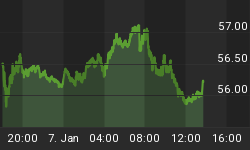First it was the NASDAQ stocks in 2000, then real estate prices, and now the third leg of this asset price correction is at the threshold. Recent salvos from China and our own commerce secretary may be the catalysts for this correction.
We have been in a multi-decade bull market in bond prices. From September of 1981 to June of 2003 the yield on the two year Treasury note fell from 16.46% to 1.23%. Likewise from October '81 through June '05 the 30 year bond has declined from 14.68% to 4.29%. Since then, the two and thirty year yield has risen to 4.5% and 4.85% respectively. According to Bloomberg, treasuries are now 1.56 percentage points lower than the 6.21% average of the past 20 years. That means even if you discard the high rates of a quarter century earlier into your calculation, treasuries yields are still about 32% below average!
What has facilitated this phenomenon has been the flow of foreign capital into the fixed income market. The reason for their excess in savings and abundance of global liquidity is the high rates of monetary growth from central banks. It is the search for a home for that inflation which is driving prices to irrational levels.
When are bonds a good deal for investors? When their after-tax yield is above the rate of inflation and that rate of inflation is expected to decline.
Today, we see precisely the opposite scenario. The after-tax yield on a 30 year bond is arguably a negative 3.5%, my own calculation based a 28% tax bracket and more realistic 7% rate of inflation (when including items like asset prices and property taxes that are excluded from the official calculation of CPI).
And with the retirement of the baby boomers around the corner -- exploding our budget deficits -- the inexorable move towards higher inflation is in little doubt. In addition to the trend of increasing debt, China announced on March 20th that it will no longer accumulate foreign exchange reserves. Following that potential news bombshell, our own Commerce Department Secretary Carlos Gutierrez said March 30th that duties on coated paper between 10.9% and 20.3% would be imposed on Chinese imports.
Imposing trade sanctions while continuing to supplicate for a wider Yuan exchange band is a recipe for a lower dollar and much higher bond yields. If the U.S. gets its way, it could engender a spiral of foreigners selling treasuries, leading to a falling dollar, which could cause further selling of bonds. Our reliance on foreigners to continue our standard of living should not be overlooked. Even if they don't sell their dollar holdings and just stop taking new positions, it would send shockwaves through the currency and bond markets.
Market strategists point out that the earnings yield of equities makes stocks a good value as compared with bonds (currently 1.88 percentage points above treasuries according to Bloomberg). Rather than exemplifying that stocks are cheap, I believe it further underscores the overvalued state of bonds. Debt markets are laden with speculative froth and investor complacency is in no place more evident than in the bond market. Due to the continuance of below-trend growth in GDP, the major down-leg in bond prices may be held in abeyance for a few more quarters. However, investors would be wise to prepare now for the secular trend towards much higher yields. If you are forced into the debt market, stay with the highest quality and shortest duration. Despite their recent strength, dividend paying foreign equities and commodities continue to look like a more attractive alternative on a long-term basis.















